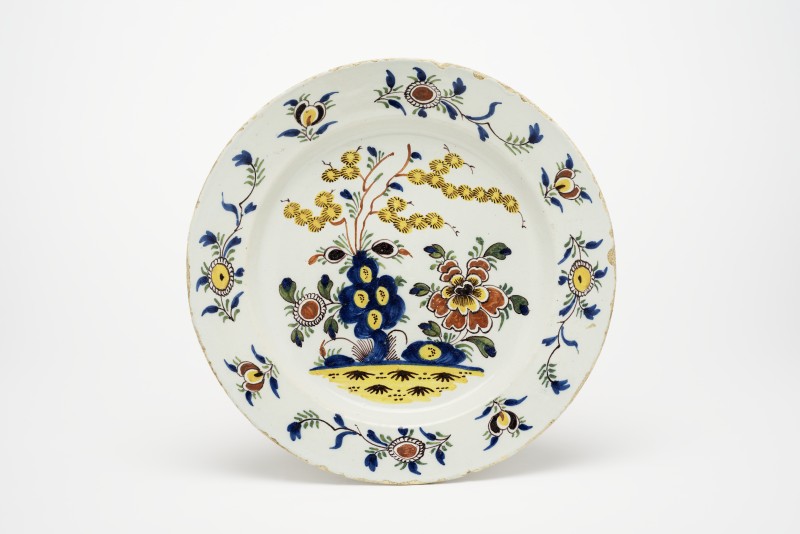Teller auf Standring mit konkav gewölbtem Spiegel, steilem Anstieg und schräg ansteigender Fahne.
Im Spiegel zwei Blütenstauden auf gelbem Erdsockel: rechts stilisierte Päonie, links an blauem Stamm Phantasieblume mit zahlreichen gelben Blüten. Auf der Fahne vier Blütenzweige alternierend mit vier einzelnen Blüten.
Am Rand, der stark bestoßen ist, mehrere Ausbrüche. Der Standring zur Aufhängung durchbohrt.
Ohne Marke
Alte Inv. Nr. Keramik I. 429
Erwerbung vor 1896 (alter Bestand)
en

